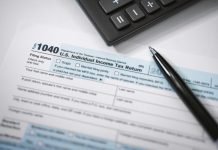 In 2015, 71% of college graduates left school with an average of $35,051 in debt, nearly quadruple the average debt among college graduates in 1993. That’s a lot of debt to be strapped with as graduates make their way into the working world.
In 2015, 71% of college graduates left school with an average of $35,051 in debt, nearly quadruple the average debt among college graduates in 1993. That’s a lot of debt to be strapped with as graduates make their way into the working world.
Fortunately, there are options that can help some borrowers pay off that debt earlier, have some of it forgiven or make the payments easier to handle.
If you’re struggling with student loan debt, check out the following options to see what assistance you might qualify for. And remember, your student loan repayments can have a huge impact on your credit scores, which can affect your ability to get good interest rates on auto loans, credit cards and even home mortgages. You can see how your student loan repayments are impacting your credit by viewing your free credit scores on Credit.com.
1. Permanent Disability Forgiveness
If you are permanently disabled, you could qualify to have your student loans forgiven by following the steps, as outlined on disabilitydischarge.com:
- If you’re a veteran, you can submit documentation from the U.S. Department of Veterans Affairs showing the VA has determined you are unemployable due to a disability related to your service.
- If you’e receiving Social Security Disability Insurance or Supplemental Security Income benefits, you can submit a Social Security Administration notice of award for SSDI or SSI benefits that states your next scheduled disability review will be within five to seven years from the date of your most recent determination; or
- You can submit certification from a physician that you are totally and permanently disabled. Your physician must certify that you are unable to engage in any substantial gainful activity because it has been determined that it can be expected to result in death; has lasted for a continuous period of no less than 60 months; or can be expected to last for a continuous period of no less than 60 months.
2. Public Service Forgiveness
This loan forgiveness program is designed to encourage people to enter and to continue to work full time in public service. Under the Public Service Loan Forgiveness program, you may qualify for forgiveness of your remaining loan balances after you’ve made 120 qualifying payments while employed full time by certain types of public service employers, according to StudentAid.gov.
3. Physician Forgiveness
Several states offer student loan forgiveness programs to doctors (some also include pharmacists, dentists, nurses and other health care professionals). New York, for example, offers up to $150,000 to physicians who commit to working in an underserved region for five years.
4. Nursing Repayment Program
This program repays up to 60% of student loans for registered nurses who agree to work full-time (32 hours or more each week) for two years in a nonprofit facility that needs nurses. Nurses that choose to work a third year have the opportunity to repay an additional 25% of their student loans. For more information, you can visit the website of the Health Resources and Services Administration.
This article originally appeared on Credit.com and was written by Constance Brinkley-Badgett.










